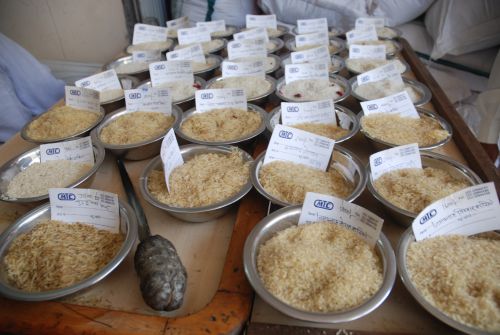Impact of India’s National Food Security Act on domestic and international rice markets
 This study analyzes the long-term impact of India’s Food Security Act on its domestic rice market and the international market for rice. This study analyzes the long-term impact of India’s Food Security Act on its domestic rice market and the international market for rice.
This study analyzes the long-term impact of India’s Food Security Act on its domestic rice market and the international market for rice. This study analyzes the long-term impact of India’s Food Security Act on its domestic rice market and the international market for rice.
 Policy making in food security is at a crossroads in India, particularly for the rice crop. Whereas India has emerged has a leading rice exporter over the last two years, the government has also introduced a large food subsidy program called the National Food Security Act. The program requires that 33.6 million metric tons of rice per year be distributed to the marginalized rural and urban populations of the country. In this study, analyze the long-term impact of India’s Food Security Act on its domestic rice market and the international market for rice. Specify and apply a structural demand-and-supply model to India’s rice market and link it with the world rice market, as part of a broad partial equilibrium modeling system of international agriculture commodity markets. Specifically focus on three different scenarios—subsidy as a price effect, subsidy as an inelastic income effect, and subsidy as an elastic income effect—under the broader framework of the National Food Security Act. We find that at the end of the projection period (the 2024/2025 crop year), as a result of the rice subsidy program, the consumption of rice increases significantly by 6,831 thousand metric ton (MT) in the case of the price effect while the inelastic income effect has little on production, consumption which increase by 265 thousand MT and 269 thousand MT, respectively and no impact on rice export of India.
Policy making in food security is at a crossroads in India, particularly for the rice crop. Whereas India has emerged has a leading rice exporter over the last two years, the government has also introduced a large food subsidy program called the National Food Security Act. The program requires that 33.6 million metric tons of rice per year be distributed to the marginalized rural and urban populations of the country. In this study, analyze the long-term impact of India’s Food Security Act on its domestic rice market and the international market for rice. Specify and apply a structural demand-and-supply model to India’s rice market and link it with the world rice market, as part of a broad partial equilibrium modeling system of international agriculture commodity markets. Specifically focus on three different scenarios—subsidy as a price effect, subsidy as an inelastic income effect, and subsidy as an elastic income effect—under the broader framework of the National Food Security Act. We find that at the end of the projection period (the 2024/2025 crop year), as a result of the rice subsidy program, the consumption of rice increases significantly by 6,831 thousand metric ton (MT) in the case of the price effect while the inelastic income effect has little on production, consumption which increase by 265 thousand MT and 269 thousand MT, respectively and no impact on rice export of India.
